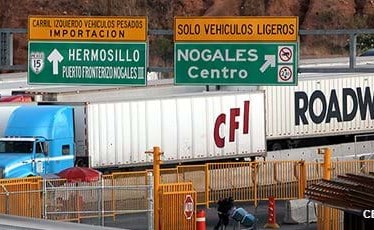
Latin America Most Exposed to Trump Risk
Potential Trump trade and immigration policy impacts Latin America.
BY LATINVEX STAFF
Mexico, Costa Rica, the Dominican Republic and Panama are among the top five countries worldwide that are most exposed to a potential new presidency of Donald Trump, according to the Trump Risk Index from Economist Intelligence Unit (EIU). The ten most exposed countries also include El Salvador and Honduras.
The Trump Risk Index (TRI) uses quantitative indicators to measure the broad exposure of the US’s 70 largest trading partners. Overall risk score is based on an assessment of vulnerability across three areas—trade, immigration and security—where EIU expects important policy changes under Trump.
With some exemptions and carveouts, the EIU projects Trump would follow through on his stated intention to impose a 10% blanket tariff on US imports; although it believes that this would ultimately be watered down.
“The TRI shows that US allies and partners have among the highest overall exposure to policy changes under Mr Trump, as they have the deepest trade, security and cultural links with the US,” EIU says. “This higher level of dependency also exposes them to major changes in the direction of US policy. Mexico ranks as the most exposed country overall, with an index score of 71.4, driven by its high trade and immigration exposure. Several other Latin American countries lie in the top ten most exposed owing to their economic and cultural links with the US.”
Protectionism under a Trump presidency would create uncertainty in the global trade landscape.
“The US goods trade deficit is a primary economic concern for Mr Trump, and he has indicated plans to address it if he wins the presidency, including through the use of the sort of punitive tariffs that were used regularly during his previous term in office,” EIU points out.
A geography’s bilateral trade balance with the US has therefore been weighted heavily in the TRI trade sub-index to assess exposure, alongside indicators such as the direction of the trade balance and shipments to the US of politically sensitive items such as steel, aluminum and automotives, which are more likely to be subjected to tariff imposition.
Free-trade agreement (FTA) status with the US is included as a countervailing indicator. The EIU believes that an FTA would offer some protection by making it more difficult to impose higher tariffs, although this may not always be a deterrent, as evidenced by Trump’s pressure on South Korea to renegotiate its trade agreement with the US in 2018, it acknowledges.
“Some of the biggest economic partners of the US rank highest for trade exposure. Mexico and Canada, neighbors of the US that together form the United States-Mexico-Canada trade agreement, are among the most exposed economies,” EIU says. “Both have large trade surpluses with the US and export high volumes of sensitive goods.”
Mexico tops the trade sub-index, with a score of 100 thanks to its strong reliance on trade with the United States.
REMITTANCES
Meanwhile, remittance-reliant countries will be most impacted by Trump’s immigration policy.
“Tighter US immigration and border policies under a prospective Trump administration will have global spillovers,” EIU says. “Immigrants to the US will often remit employment earnings to their home countries, while those studying in US institutions who later return home will typically do so with improved skills and prospects.”
Trump took a tough stance on immigration during his first term—as suggested by the construction of a border wall and increased immigration enforcement—and the issue is playing a central role in his campaign this year, EIU points out.
“Smaller Latin American economies dominate the immigration sub-index in terms of high exposure,” the TRI report says. “Remittances from the US, for example, are equivalent to at least 15% of GDP in El Salvador, Honduras and Guatemala, indicating significant economic exposure if immigration policies were to tighten.”
In El Salvador and Honduras, remittances from the US account for 23% and 21% of their GDP, respectively.
Also larger countries such as Mexico and the Dominican Republic depend to a certain degree on remittances from the United States.
And these five Latin American countries also rely on US visas – both immigrant and non-immigrant.
© Copyright Latinvex
RELATED ARTICLES
Trump Tariff Would Violate USMCA, LatAm FTAs
Fitch Warns of Trump Risk for Latin America
Moody’s Analytics: Trump Tariffs Would Cut Mexico Growth
Trump & Latin America: What to Expect












